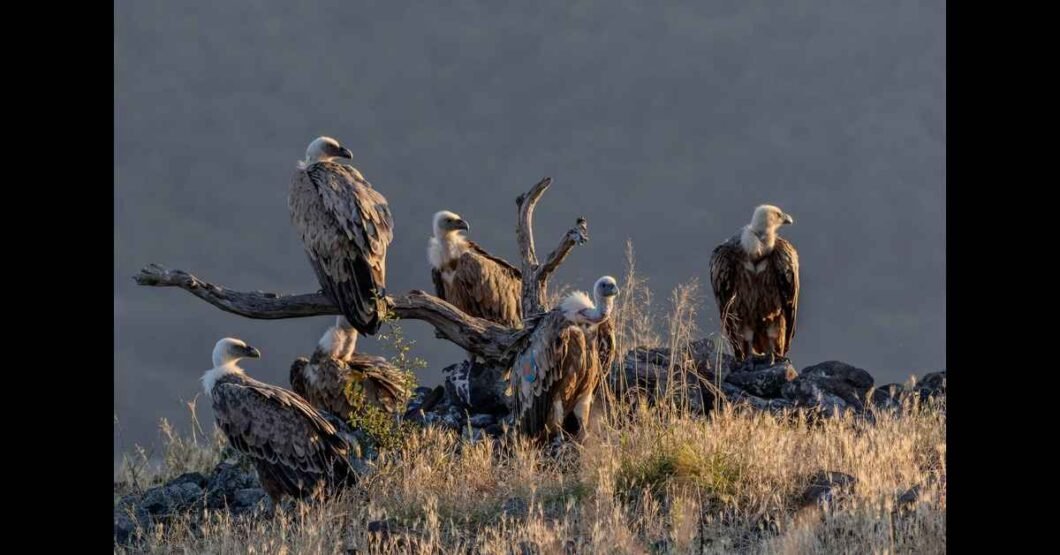Introduction
In the order of grand nature, the predators tend to steal the limelight. But the other types of animals are equally important to a well-balanced ecosystem: the Fare Eaten by Scavengers.
These are the species that consume dead or decaying things, a very important process that makes our natural environment clean, working and full of nutrients. Scientifically, food consumed by scavengers is referred to as carrion, which is a part of the remains of the dead animals, plants and any other organic waste.
This paper plunges into the environment of scavengers. You will discover what animals can be called fare eaten by scavenger, what they feed on, how they help the ecosystem, and why they are all the more important today in the era of environmental deterioration and climatic changes. Vultures and hyenas, beetle larvae, and crabs are our unsung heroes, and we scarcely celebrate them.
Defining Scavengers and Their Dietary Habits
Fare Eaten by Scavengers are organisms that feed on dead animals and organic waste materials rather than going out to get food by hunting. They tend to feed on carrion, which consists of roadkill and leftovers of predator kills or decaying plant matter and even humans, to name a few.
Examples of Scavenger Fare are:
- Animal carcasses (rodent, deer, bird, etc.
- The residues of fish and shellfish (dried fish and shell waste)
- Foods high in fat, such decaying plant vegetables and greens
- Fur, bone components, skin, shells of eggs
| Scavenger Fare | Source |
| Carrion (dead animals) | Natural deaths, predator kills |
| Organic matter (plants) | Fallen fruits, rotting leaves |
| Waste leftovers | Urban garbage, roadkill |
It all depends on the habitat, biological composition and social behavior of the scavenger as to what and how they eat.
Terrestrial Scavengers: Who Are the Land Based Eaters?
The scavenging activity is widespread among different animals on land. All of the species have a role to play in destroying organic materials and accelerating the rate of decomposition.
Common Land Scav:
Vultures— eat very toxic carrion with specialized stomach juices.
Hyenas—These are known to scavenge and hunt.
Jackals and Coyotes—A scavenger of urban and rural feedings.
Bears—will feed off of carrion when they can get it, particularly after hibernation.
These animals prey upon the leftovers that are left behind by predators and hence they recycle the energy and nutrients back to the ecosystem.
Aquatic Scavengers: Cleaning the World’s Waterways
Fare Eaten by Scavenger creatures can also be found in wetlands and oceans, as there are organisms there that feast on fallen organic matter.
Examples include:
Crabs — are Paid cleaners removing remains of the fish and algae.
Lobsters—renowned for eating carrion.
Sea cucumbers—they consume detritus and organic sediment that resides on the sea bottom.
Catfish—These are carrion feeders in freshwater and feed on plant materials.
Aquatic scavengers are very useful in sustaining the quality of the water and as such, need to be substituted in the food chain of the ocean.
Insects: The Smallest Yet Most Efficient Scavengers
Indeed, insects, and in particular the decomposers such as the beetles and flies, are actual magnets of rapid decomposition to a microscopic level.
Major Scavenger Insects:
- Blowflies & Houseflies—The deposits eggs in carrion, the larvae feed upon the tissue.
- Dung beetles—Roll and bury feces, cleaning up environments and fertilizing the soils.
- Whales with bowheads— Grubs made of lubricant. The delicate tissues of decomposing animals are broken down by crawlers.
| Insect | Scavenged Material | Ecological Benefit |
| Maggots | Animal flesh | Decomposition & nutrient cycling |
| Dung Beetles | Feces | Soil enrichment |
| Ants | Small organic particles | Efficient organic cleanup |
Although they are minute, they have massive volumes of decomposing material to process, and, therefore, they play an important role in organic waste management.
Scavengers vs. Decomposers: What’s the Difference?
Although both scavengers and decomposers get involved in the decaying material, the ways in which they do so are completely different.
| Feature | Scavengers | Decomposers |
| Organism Type | Animals (vultures, crabs, hyenas) | Microbes (bacteria, fungi) |
| Consumption Method | Eat with teeth/mouth | Break down matter chemically |
| Visible Role | Physical cleanup | Chemical nutrient recycling |
| Dependency | Often first in the food chain | Complete the nutrient cycle |
Scavengers begin the cleanup. Decomposers finish it, ensuring no organic matter goes to waste.
Ecological Benefits of Scavenger Consumption
The food consumed by the fare eaten by scavengers has a prime role in the system. In the absence of scavengers, carcasses and organic refuse would pile up and result in:
- Transmission of disease
- Pest infestations
- Reduced soil qualities
- An elevated level of CO₂ emission and methane gas emission due to decomposition of dead matter
Key Benefits:
- Control of diseases: Vultures eliminate anthrax and rabies scavengers.
- Forest hygiene: Beetles and mammal carnivores prevent accumulation of decay.
- Energy recycling: By consuming carcasses, there also is no energy loss in the food chain.
- Improved fertility of soil due to breakdown of bones and organic waste.
Through this, they are contributing to a repurposing of death into life within the natural systems.
The Role of Fear in Behavioral Adaptation
Remarkably, scavenger diets can affect animal behavior, migration and reproduction.
- Vultures also migrate to pursue seasonal die-offs (e.g., wildebeest in Africa).
- Wildlife such as the bears come out of hibernation and feed on the carcasses of starved animals in winter.
- The trend of garbage collection and use between humans and rodents and raccoons living in cities is altered to suit their own food needs.
The patterns of their eating shape up decisions on the design of habitats, conservation zones, and national parks.
Urban Scavenging: Animals That Thrive on Human Waste
The scavenging practice has been transformed greatly by urbanization, especially in the urban areas where the waste is more than in the rural areas.
| Urban Scavenger | Typical Fare |
| Rats | Leftovers, poultry remains |
| Raccoons | Rubbish bins, compost piles |
| Seagulls | Landfills, fish market scraps |
| Stray Cats/Dogs | Street food, household garbage |
They are used in the management of urban wastes, but when overdeveloped, they cause nuisance or result in the spread of zoonotic diseases.
The waste disposal and wildlife management have a major role in the balance.
Threats to Scavenger Species & Their Fair Access
Fare Eaten by Scavengers in various parts of the world are also getting endangered as a result of human activity and this is even making their food source diminish in size.
Key Threats:
- Carrion is contaminated by pesticides and poisons that are used in agriculture.
- Veterinary drugs (such as diclofenac) find their way to the food chain with the death of livestock.
- Roadkill insects and scavengers often become roadkill as well.
- It occurs in plastic ingestion of polluted waterside garbage.
| Threat Source | Affected Scavenger | Consequences |
| Veterinary drugs | Vultures (India, Pakistan) | Massive population loss |
| Urban pollution | Raccoons, Rats | Plastic toxicity |
| Habitat reduction | Hyenas, Coyotes | Limited fare access |
Conservation measures would have to encompass safe access to scavenging fodder and superior toxicology management in the ecosystem.
Conservation and Future of Scavenger Ecology
The value of the food consumed Fare Eaten by Scavengers has forced authorities to take the issue proactively in the past few years.
Conservation Strategies:
- Vulture restaurants: The clean and vet-safe carrion is deposited here, it is left to the endangered vultures.
- Eco-corridors: To ensure other animals like hyenas, jackals and birds have a way of passage.
- Re-wilding where scavenger species like the bearded vulture and Tasmanian devil are involved.
Worldwide Action Points:
- In the current 2025 resilience framework by UNEP, scavengers are included in its preservation.
- Scavenger support areas You might also frequently come across wildlife sanctuaries where the emphasis is more on scavenger zones.
All this reaffirms a scientific reality that has long been disregarded: fare eaten by scavengers are actually linchpins, not bit characters, in biodiversity around the globe.
FAQs
What is the common menu of the scavengers?
It is available in its carrion, decaying flesh, rotting fish and of vegetables.
Where are all the scavengers hostile to man?
No. The majority play a beneficial ecological role, and no threat or fear should occur when they are not disturbed.
What are the uses of vultures in an ecosystem?
They safely deal with disease-prone carcasses and avoid occurrences of diseases.
Do scavengers only eat dead animals?
Primarily, yes. Some are scavenging and can feed on other organic matter also.
What can we do to guard scavenger food supplies?
Prevent the poisoning of carcasses, promote safe disposal activities, and preserve habitats.
Conclusion
The food consumed by scavengers may be unspeakable, yet it is very crucial to Earth life. Whether they are birds of prey in the air or crustaceans in the sea, these organisms quietly process billions of tons of organic materials annually, making the place a safer, cleaner, and more productive environment for life that exists on the planet.
The delicate web of life that Fare Eaten by Scavengers help to maintain continues to be an important part of the biodiversity we should be focusing on preserving in 2025 as we reimagine what that means to an individual or the planetary level. To preserve the ecosystems, we must uphold even the beings that feed on death and turn it into life.
Visit the rest of the site for more interesting and useful articles.




